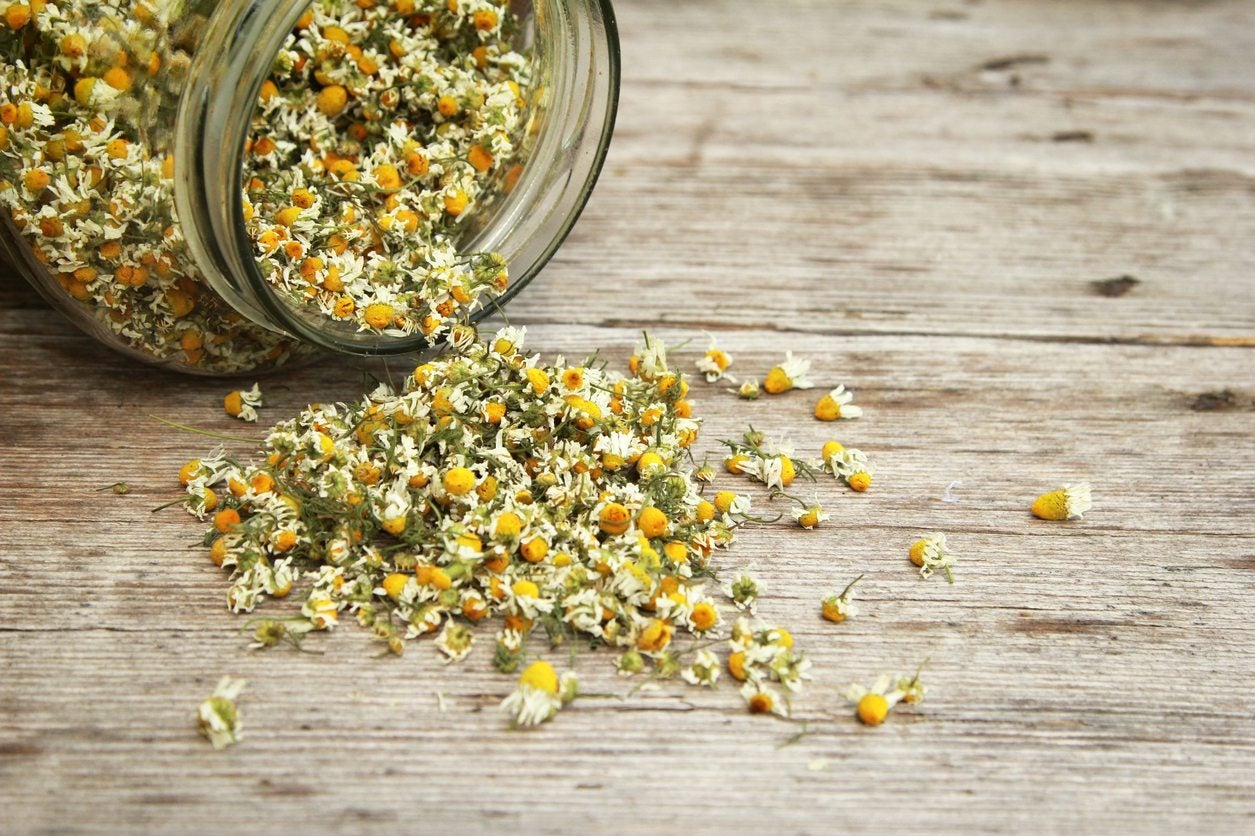How To Dry Chamomile Plants – Tips For Drying Chamomile Flowers

Chamomile is one of those quintessential soothing teas. My mother used to brew chamomile tea for everything from a tummy ache to a bad day. Chamomile, unlike other herbs, is harvested just for its lovely, daisy-like flowers, which are then preserved. Chamomile preservation basically means drying the chamomile flowers. There are four chamomile drying techniques. Read on to find out how to dry chamomile.
Chamomile Drying Techniques
There are two types of chamomile: German and Roman. While both contain essential oils and antioxidants that help relax the body and perk us up when fatigued, German chamomile is the type most often grown for its medicinal purposes, as its oil is stronger. As mentioned, chamomile preservation involves drying the flowers. There are four techniques for drying chamomile flowers. Drying is the oldest, as well as the easiest and safest, form of food preservation.
How to Dry Chamomile
Chamomile flowers are preserved by exposing them to warm, dry air. Harvest the open blossoms in the early morning just after the morning dew has dried when the essential oils are at their peak. Sun dry chamomile. The easiest, most economical way to dry chamomile is in the open air. Sort through the flowers and remove any insects. Lay the blossoms out on a clean paper or mesh screen. Be sure to lay them out in a single layer so they dry quickly. Leave them outside on a hot, low-humidity day or inside in a warm, dry, well-ventilated area. Although chamomile can be dried in the sun, this method is often discouraged since the sun causes the herbs to lose color and flavor. Drying chamomile in dehydrator. The best way to dry your chamomile is with a food dehydrator. Pre-heat the unit to 95 to 115 degrees F. (35-46 C.). Place the flowers in a single layer on the dehydrator trays. Depending on the temperature you use and the type of dehydrator, it may take between one and four hours to dry the flowers. Check the dehydrator every 30 minutes or so. Using oven to dry chamomile. Chamomile can also be dried in the oven at its lowest temperature. If you have a gas oven, the pilot light will furnish enough heat for drying overnight. Again, lay the blossoms out in a single layer. Microwave drying chamomile. Lastly, chamomile can be dried in the microwave. This is especially helpful when you only have a handful of blossoms to dry, which can happen as chamomile continues to bloom over the course of the summer. Lay the flowers on a paper towel and cover them with another paper towel. Allow them to dry anywhere from 30 seconds to 2 minutes, depending on your microwave wattage, and check them every 30 seconds to see if they are dry. No matter how you dry chamomile flowers, you've preserved them for use in tasty herbal tea whenever you need it. Store them in a sealed, airtight container in a cool, dark area. Also, be sure to label and date the herbs. Most dried herbs will keep for about a year.
Sign up for the Gardening Know How newsletter today and receive a free copy of our e-book "How to Grow Delicious Tomatoes".

Amy Grant has been gardening for 30 years and writing for 15. A professional chef and caterer, Amy's area of expertise is culinary gardening.
